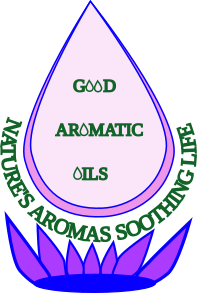Discover the Science Behind Essential Oils
Unveil the intricate chemical properties that make essential oils both effective and safe for everyday use.
Understanding Essential Oils
The Role of Chemistry in Aromatherapy
Essential oils have been cherished for centuries for their aromatic and therapeutic benefits. In aromatherapy, these oils are revered for their ability to influence mood, promote relaxation, and support overall well-being. Understanding the chemical properties of essential oils is crucial, as it allows us to harness their full potential safely and effectively. By exploring the unique compounds within each oil, we can appreciate their diverse applications and ensure their safe use in various contexts.

Chemical Properties of Essential Oils
Each essential oil is composed of a complex blend of chemical constituents, which determine its fragrance, potency, and therapeutic effects. For instance, lavender oil contains linalool and linalyl acetate, known for their calming properties. Eucalyptus oil, rich in 1,8-cineole, is renowned for its respiratory benefits. Understanding these chemical profiles helps in selecting the right oil for specific needs, ensuring both efficacy and safety in their application.
Therapeutic Effects Explained
The therapeutic effects of essential oils are deeply rooted in their chemical makeup. For example, the anti-inflammatory properties of chamomile oil are attributed to its high levels of chamazulene. Similarly, the antimicrobial action of tea tree oil is due to terpinen-4-ol. By delving into these chemical properties, we can better understand how essential oils can be used to support health and wellness naturally.

Understanding the Effectiveness of Essential Oils
The chemical properties of essential oils are pivotal in determining their effectiveness across various applications. These oils are composed of complex mixtures of volatile compounds, including terpenes, esters, and aldehydes, each contributing to their unique therapeutic properties. For instance, the high concentration of monoterpenes in oils like lavender and peppermint enhances their ability to soothe and relax the mind, making them ideal for stress relief. Additionally, the antimicrobial properties of certain oils, such as tea tree and eucalyptus, are attributed to their rich content of phenolic compounds, which effectively combat bacteria and fungi. Understanding these chemical compositions allows us to harness the full potential of essential oils in aromatherapy, skincare, and holistic health practices.
Furthermore, the synergy between different chemical constituents in essential oils can amplify their therapeutic effects. This phenomenon, known as the ‘entourage effect,’ suggests that the combined action of various compounds is more potent than the effect of individual components. For example, the blend of linalool and linalyl acetate in lavender oil not only promotes relaxation but also enhances skin healing properties. By leveraging these chemical interactions, Good Aromatic Oils ensures that each product delivers maximum efficacy, aligning with our commitment to providing nature’s aromas for soothing life.
Safety Considerations for Essential Oils
While essential oils offer numerous benefits, it is crucial to understand the safety considerations associated with their use. The concentrated nature of these oils means they must be used with care to avoid adverse reactions.
Are essential oils safe for everyone to use?
Essential oils are generally safe when used correctly, but they can cause allergic reactions or skin irritation in some individuals. It is advisable to perform a patch test before applying any new oil to the skin and to consult with a healthcare professional if you have any underlying health conditions.
Can essential oils be ingested?
Ingesting essential oils is not recommended unless under the guidance of a qualified healthcare provider. Some oils can be toxic when consumed and may interact with medications or exacerbate medical conditions.
How should essential oils be stored?
Essential oils should be stored in a cool, dark place, away from direct sunlight and heat. This helps preserve their chemical integrity and prolongs shelf life. Always keep oils in tightly sealed bottles to prevent oxidation.
What precautions should be taken when using essential oils around children?
Children are more sensitive to essential oils, so it is important to use them with caution. Dilute oils appropriately and avoid using strong oils like peppermint or eucalyptus on or near young children. Always consult a pediatrician before use.
Are there any essential oils that should be avoided during pregnancy?
Pregnant women should avoid certain essential oils, such as clary sage, rosemary, and jasmine, as they may stimulate uterine contractions or have other adverse effects. It is best to consult with a healthcare provider before using any essential oils during pregnancy.
Explore Our Safe and Effective Essential Oils
Comparison of Essential Oils and Their Properties
Lavender Oil
Calming and Relaxing
Antimicrobial
Skin Healing
Tea Tree Oil
Antiseptic
Anti-inflammatory
Fungal Infections
Peppermint Oil
Digestive Aid
Mental Clarity
Cooling Sensation
Eucalyptus Oil
Respiratory Support
Decongestant
Pain Relief
Discover the Power of Essential Oils
Unlock the secrets of nature’s most potent aromas. Dive deeper into the chemical properties of essential oils and see how they can enhance your well-being. Explore our comprehensive guides and find the perfect oil for your needs today!

